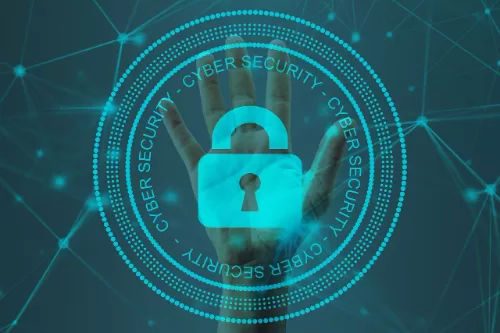Identity Theft: How to Prevent and Fix a Cyber Breach
In today’s digital age, cybersecurity isn’t just a corporate concern—it’s a personal one. Identity theft, where criminals steal your sensitive information to commit fraud, has become alarmingly common. According to recent reports, 1 in 10 Americans fell victim to identity theft in 2024, with losses exceeding $16 billion. But with proactive cybersecurity measures and quick action, you can protect yourself and minimize damage if a breach occurs.

The New Face of Identity Theft
Today’s identity thieves bypass physical documents, targeting digital footprints instead. Cybersecurity experts warn that 85% of modern identity theft originates from:
Phishing 2.0 – AI-generated messages mimicking trusted contacts
Credential stuffing – Automated login attempts using leaked passwords
Wi-Fi eavesdropping – Public network snooping on unencrypted data
Social media mining – Piecing together identity details from overshared posts
These methods exploit cybersecurity vulnerabilities at both individual and organizational levels, turning personal information into dark web commodities.
Building Your Cybersecurity Shield
Preventing identity theft requires a layered cybersecurity approach:
Password Evolution
Use passphrases (e.g., "PurpleTiger$RunsFast!") instead of complex characters
Enable multi-factor authentication (MFA) everywhere – especially email and banking
Never reuse passwords across accounts
Digital Hygiene
Install cybersecurity-certified VPNs on public Wi-Fi
Freeze credit reports at all three bureaus (Equifax, Experian, TransUnion)
Limit social media sharing of birthdays, pet names, and hometowns
Tech-Enhanced Vigilance
Enable biometric logins (fingerprint/face ID) for critical accounts
Use cybersecurity tools like encrypted email services (ProtonMail, Tutanota)
Subscribe to dark web monitoring services through identity protection apps
These measures transform your digital presence from an easy target into a cybersecurity fortress.
When Breach Occurs: Damage Control
Despite precautions, cybersecurity defenses can fail. Follow this recovery protocol:
Step 1: Containment
Immediately change compromised passwords using a different device
Disconnect breached accounts from financial services
Revoke app permissions linked to hacked email accounts
Step 2: Documentation
File an FTC IdentityTheft.gov report – legally required for recovery
Request free credit reports via AnnualCreditReport.com
Save screenshots of fraudulent transactions
Step 3: Recovery
Place extended fraud alerts on credit files (lasts 7 years)
Dispute false accounts in writing via certified mail
Consider an identity theft passport if your state offers one
Step 4: Reinforcement
Migrate critical accounts to cybersecurity-focused providers
Replace static security questions with randomized answers
Install a mailbox lock to prevent physical document theft
The Role of Institutions in Cybersecurity
While personal vigilance matters, systemic cybersecurity failures enable mass breaches. Advocate for:
Stricter data minimization laws limiting companies’ personal data collection
Mandatory breach notifications within 24 hours of discovery
Universal encryption standards for all sensitive transmissions
Recent FTC crackdowns on lax corporate cybersecurity practices signal growing institutional accountability.
Emerging Cybersecurity Safeguards
Next-gen tools are reshaping identity protection:
Blockchain-based IDs – Self-sovereign digital identities controlled entirely by users
AI anomaly detection – Banks using machine learning to spot unusual account activity
Zero-trust frameworks – Systems that verify every access request like it’s hostile
These innovations promise to shift cybersecurity burdens from individuals to technology – but adoption timelines vary.
The Human Firewall
Ultimately, the best cybersecurity tool remains an informed user. Cultivate these habits:
Verify before trusting – Confirm unexpected requests via official channels
Update relentlessly – Install security patches within 24 hours of release
Think offline – Shred documents containing sensitive data like prescription labels
Remember: Cybersecurity isn’t about achieving perfect safety, but making yourself a harder target than others.
Conclusion
Identity theft recovery isn’t a one-time fix – it’s an ongoing process. Stay proactive with:
Annual cybersecurity checkups – Review account permissions and privacy settings
Credit freezes – Keep them active except when applying for new services
Tax return PINs – IRS-issued numbers preventing fraudulent filings
As biometrics and passwordless logins evolve, future cybersecurity may reduce identity theft risks. Until then, merging personal caution with advanced tools offers the best defense.
In our interconnected world, treating cybersecurity as a daily practice – like locking doors or wearing seatbelts – transforms identity protection from a technical challenge into a modern life skill. Your digital identity is worth guarding with the same diligence as your physical self.

